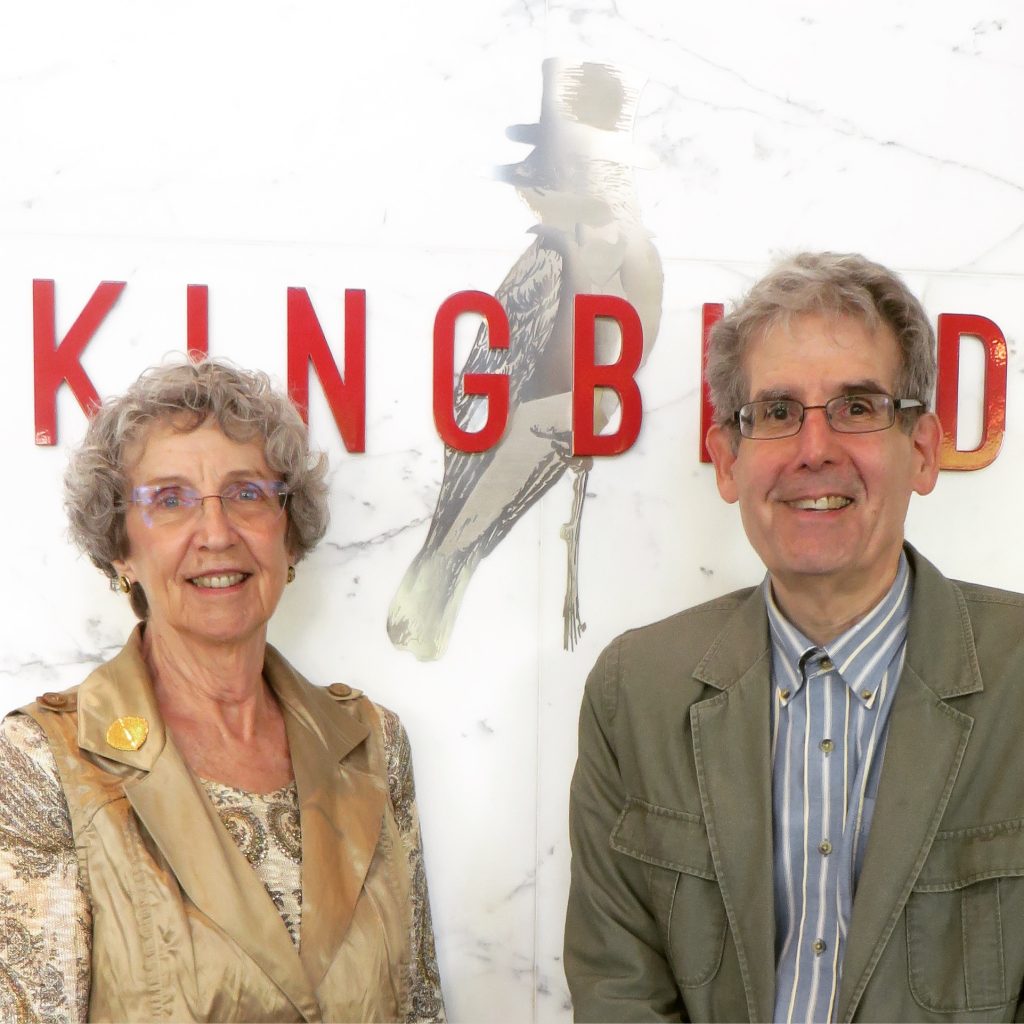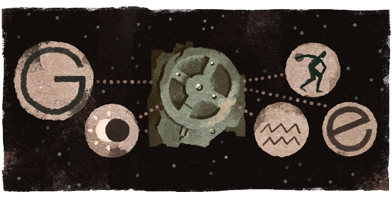(1) THE REAL AMERICAN GODS. Mark-kitteh says, “This may be the perfect combo of SF and cats for us–”
https://twitter.com/CassColors/status/864656643774070784
(2) ANIMAL FILIBUSTER. The Washington Post’s John Kelly interviewed Ralph Nader, who has written a fantasy novel, Animal Envy, in which animals are given the power to speak via a software program and “are given a 100-hour special broadcast” to discuss all their issues — “In his odd new book, Ralph Nader talks to the animals –and they talk back”.
Ralph Nader –tireless windmill-tilter –is standing at the National Zoo recalling a conversation he once had with an editor at The Washington Post about what he felt was the paper’s less-than-adequate coverage of his presidential campaign.
“I remember saying, ‘There are times I say to myself, I wish I was a panda, given the coverage The Post gives to pandas,’” Nader said.
Well, Nader still isn’t a panda, but he is a kangaroo, a dolphin, an elephant, a crocodile, a squirrel, an owl, an Arctic tern, a German cockroach, a European corn borer, a radioactive Chernobyl beaver, and dozens of other mammals, reptiles, birds and insects.
They’re all characters he assumes in his new book, “Animal Envy: A Fable.”
He is also a cheetah: Safe at any speed…
(3) LUNCH OR HISTORICAL REENACTMENT? “Cynthia Felice and I break into the Watergate Hotel!” That’s what Scott Edelman says in his dramatic invitation to listen to Episode 37 of Eating the Fantastic.
Grab lunch at the Watergate with my unindicted co-conspirator Cynthia Felice in Episode 37 of Eating the Fantastic.
I visited the Watergate Hotel recently, and in case those of you familiar with the history of that infamous location might be thinking I went there to bring down a president with a Bob Woodward/Carl Bernstein-style investigation, let me quickly add … no. Rather, I went there to investigate the food at the recently opened Kingbird restaurant, with a guest who surprised me with her sudden visit to Washington, D.C., and whom I somehow managed to convince that a meal with me would be oh, so much more fun than visiting the National Air and Space Museum.
Joining me within the walls of the Watergate Hotel was Cynthia Felice, who published her first short story, “Longshanks,” in 1976 in the pages of Galileo, a science fiction magazine published by the late, great Charlie Ryan, and her first novel, Godsfire, two years later. She is also the co-founder with Ed Bryant — about whom, alas, I must also say late and great — of the Colorado Springs Writer’s Workshop.
We discussed how Frank Herbert’s Dune made her say, “Hey, I can do that,” the virtues of owning a motel while being a writer, the marriage advice Kate Wilhelm gave her at Clarion, what Thomas M. Disch told her that fixed one of her short stories, why we all loved the late, great Ed Bryant, the extraordinary lengths David Hartwell went to as he edited her second novel, how her collaborations with Connie Willis began, and more.
(4) THOSE SIDEKICKS, THEY DO GET WEARY. ComicMix’s John Ostrander, in “Sidekicking Around”, delves into one of comics’ well-known formulas.
Robin falls into a strange category of the child or teen sidekick. He was originally introduced to lighten up the Dark Knight Detective and, again, to give Batman someone to talk to rather than himself. Robin humanized the Bat. His popularity gave rise to a whole slew of child/teen associates such as Wonder Girl, Kid Flash, Speedy, and Aqualad. Later, these five went from supporting characters to central ones when they formed their own super-team, the Teen Titans (later, just the Titans when they all outgrew their teenage years).
The original Robin, Dick Grayson, later grew out of his shorts and tights to become a full-fledged hero of his own, first as Nightwing and then later, briefly, actually taking Bruce Wayne’s place as Batman before reverting back to Nightwing. There have been other Robins since then, including one — Jason Todd — who was killed by the Joker. Don’t worry; he got better. The role is currently being filled by Bruce’s son, Damian. I believe he died as well at one point but is also now feeling better.
(5) STEAMPUNK BIBLIOPHILE RETURNS. This week 2012 Hugo Finalist Selena Chambers released Calls For Submission, her new short fiction collection.
Selena Chambers’ debut collection guides readers out of space and time and through genre and mythos to explore the microcosmic horrors of identity, existence, and will in the face of the world’s adamant calls for submission. Victorian tourists take a virtual trip through their (and the Ottoman empire’s) ideal Orient; a teenage girl learns about independence and battle of the bands, all while caring for her mesmerized, dead mother; a failed Beat poet goes over the edge while exploring the long-abandoned Government Lethal Chambers.
Chambers was a Related Work co-Hugo Finalist in 2012 with Jeff VanderMeer for their collaboration on The Steampunk Bible: An Illustrated Guide to the World of Imaginary Airships, Corsets and Goggles, Mad Scientists, and Strange Literature.
(6) MORE YA AWARD WSFS WANK. Kevin Standlee says, “You’d Think I’d Remember These Things”. You need to read all four steps to follow his argument, but here’s a foretaste of what you’ll be getting into if your click the link….
-
Item 1 means that that as it currently stands, the Worldcon 75 WSFS Business Meeting does not have the authority to name a YA Award. However, the 2018 WSFS Business Meeting could apply a name to the Award in a single vote because of that provision. (Of course, this is all moot if the base proposal fails to be ratified.)
-
Should the 2017 Business Meeting decide to ratify that YA proposal without the provision, the 2017 Meeting could then move as a new amendment to insert a name into the Award, with the name being something that could be passed in 2017 and ratified in 2018, like any other WSFS Constitutional amendment. That means the YA Award would have no official name in 2018, but (assuming 2017 passes a naming amendment that is ratified in 2018), it could get an official name for 2019 and beyond.
(7) BREW FOR TWO. Sounds like anybody who makes it through the Worldcon 75 Business Meeting will probably need to stop over in Iceland on the way home to chill out — “Beer baths to open in North Iceland in June”.
Kaldi brewery in Ãrskogssandur, just north of Akureyri in North Iceland, will be opening beer baths and spa in the coming month.
“The construction of the baths is progressing and everything is according to plan,” says Agnes Anna Siguroardottir, CEO of Kaldi brewery.
There will be seven beer baths in total, all suitable for two people. All guests that have reached 20 years in age can relax in their beer baths with a beer in hand, as there will be a pump by each bath. 20 is legal drinking age in Iceland.
(8) TRIVIAL TRIVIA
Film director Stanley Kubrick was a big admirer of Steve Martin’s movie The Jerk. (Source: IMDB)
(9) TODAY IN HISTORY
- May 17, 1902 –The Antikythera mechanism is recovered. Today’s Google Doodle celebrates the occasion.
(10) THE BIRD BLABS. The Vulture knows what might have been: “The Secret History of William Gibson’s Never-Filmed Aliens Sequel”
But there’s an alternate universe where the series’ propulsive momentum only increased –a reality in which the third Alien film featured advanced xenomorphs exploding in batches of half a dozen from people’s legs, stomachs, and mouths; where cold-warring rival space stations of communists and capitalists race to outdo one another with their genetic experiments on the aliens’ tissue; where a flock of the phallic horrors flies through the void of space, only to be beaten back by a gun-toting robot. Oh, and there’s a thing called the New Beast that emerges from and sheds a shrieking human’s body as it “rips her face apart in a single movement, the glistening claws coming away with skin, eyes, muscle, teeth, and splinters of bone.”
This is the alternate universe where legendary science-fiction writer William Gibson’s Alien III (that’s “III,” not “3”) screenplay was realized. It is, perhaps, a better world than ours….
You can find the screenplay in an antiquated .txt file online, and there have been occasional discussions of it on message boards and niche blogs, but for whatever reason, it hasn’t been appropriately acknowledged as the remarkable genre-fiction artifact that it is. Indeed, with studio backing and the right production team, one can imagine the finished film being on par with Alien and Aliens, and it certainly would have altered the course of the franchise’s history. With the arrival of Alien Covenant –a movie that, whatever its merits, largely retreads ideas from the series’ previous installments –it’s time to tell the story of how Gibson’s Alien III came to be, why it never crossed the finish line, and what made it special.
(11) KIDPROOFING. John King Tarpinian recommends, “Take the kids to see Alien this weekend, then put this cookie jar out. They will never “steal” a cookie again.” ThinkGeek’s Alien Ovomorph Egg Cookie Jar:
(12) CONDIGN REVENGE. Isn’t Aidan channeling me here?
The release of the Hugo Awards voter packet is my favourite time of the year—because the blogs have to pretend to be traditional fanzines.
— Aidan Moher (@adribbleofink) May 17, 2017
(13) PUN TIME. Yes, I think this is funny, too.
My new name is the best pun ever. Look at it closely.
— Jon Del Arroz (@jondelarroz) May 17, 2017
(14) SHADOW CLARKE JURY GOES INTO OVERTIME. Now they need to deal with the actual Clarke Award shortlist.
With both the Sharke Six and the official Clarke shortlist now out of the bag, I thought I’d like to reflect a little on some of the books I encountered that did not make the running, either through being ineligible (i.e US-published) or through not being submitted. I’ve found myself wanting to talk about them because even now at the end of Phase One of my Sharke reading and with a sizeable number of eligible submissions under my belt, these omissions still feel notable, with discussion around the Clarke Award seeming the poorer for their absence.
The Booker Prize has already had its debate about allowing American novels into the mix, with predictably divided responses. Whether or not the Clarke should open itself up to US submissions is a discussion that lies beyond the remit of this essay, though it does seem a shame that there have been and will continue to be books that stand central to any discussion of the year’s SF and yet under current Clarke rules must remain excluded from one of its most prestigious awards.
I still haven’t reviewed two of the books on my original shortlist. As it happens, we now know that neither of the books made it onto the Sharke Six, and neither made it onto the official Clarke Award shortlist, though I suspect for rather different reasons. So I thought I would take this opportunity to consider why they might not have been chosen.
I’ll start with Good Morning, Midnight by Lily Brooks-Dalton.
Superficially, this seems to be exactly the sort of novel that has often found its way onto the Clarke shortlist. It is an elegantly, at times beautifully written novel, as here when an astronaut moves from the spinning outer ring of a spaceship to the gravity-free core:
Of all the books that I personally shortlisted for this project The Power is the one that I find most challenging to judge and to write about. I chose it precisely because of this difficulty; I had read it before and felt decidedly mixed about it. I have loved some of Alderman’s earlier work — her debut Disobedience (2006) was one of the first books that I reviewed online — and have read her assiduously, with great pleasure. Yet this fourth novel, her breakthrough book, left me unsure and unsettled. While friends and critics turned out in numbers to praise its ingenuity and confidence, its bold engagement with the dynamics of power and gender, I hung back and sat on my immediate reaction. Which was: Yes, all those things, but… I couldn’t decisively put my finger on what the ‘but’ was; it was just there, throwing up a barrier between the book and me. At the same time, I couldn’t dismiss it; I was niggled. It stayed with me. So much so, that when it came time for creating my Clarke shortlist I knew The Power had to be on it. Whatever my personal reservations, it was clearly one of the more thought-provoking and eloquent of the submitted books. I felt I owed it a re-read, to test my first response.
Other commentators have already discussed the alternate history setting of Azanian Bridges (Paul Kincaid on this site and Gautam Bhatia at Strange Horizons, while Mark Bould also provides a useful list of other African alternate histories on his own website), and I don’t see any real point in recapitulating what they’ve already said so well.
Instead, I want to focus on the relationship between Martin van Deventer, the white psychologist, and Sibusiso Mchuna, the young black man whom he is attempting to treat. Sibusiso, a trainee teacher, has withdrawn into himself after witnessing the murder of his friend, Mandla, at an anti-government rally. At a loss to know what else to do for him, his father has agreed to his being admitted to the local mental asylum for treatment. We can only speculate as to why his father did this rather than taking Sibusiso home but for now consider it as only one among many markers of the fact that Sibusiso is metaphorically as well as literally a long way from home, living in a white world, among people who have no idea about him.
(15) WE INTERRUPT YOUR READING FOR AN IMPORTANT ANNOUNCEMENT. Now that Chuck Tingle’s professional porn has been linked from the Hugo Voter Packet, Hugo administrator Nicholas Whyte feels the need to clarify his cameo appearance in the work — thus his LiveJournal post “Pounded In The Butt By My Second Hugo Award Nomination, by Chuck Tingle”:
Second paragraph of third section:
“Hello, I’m Chuck,” I say, formally introducing myself.
I am quoted (well, paraphrased) in the crucial second section, in which author Chuck Tingle, miserable after the defeat of Space Raptor Butt Invasion in the 2016 Hugo Awards, receives notification from the 2017 Hugo Awards adminstrator that he has been nominated this year. Let’s just say for the record that the demands subsequently and consequently made of him as part of the Hugo process are not those actually required of Hugo finalists in real life.
(16) THE BEST DAY OF HIS LIFE. “This 10-year-old donated thousands of comic books to veterans” — The Week has the story.
Carl Scheckel knows that not all heroes wear capes. In a show of support for American soldiers, the 10-year-old comic-book aficionado from New Jersey decided to collect and donate thousands of comic books to veterans in hospitals and servicemen deployed overseas. The mastermind of carlscomix.com, Scheckel gathered roughly 3,500 books for the nearby Joint Base McGuire-Dix-Lakehurst, When he arrived to donate them in person, officers treated him to a surprise VIP tour of the base, where he got to try on military gear and explore the inside of a place. ‘It was the best day of my life!’ wrote Carl on his website.
(17) AN OPPORTUNITY ON MARS. It’s been there for over 13 years! “Mars rover reaches site that scientists still can’t explain”.
Opportunity, which is much, much smaller than its car-sized Curiosity cousin, was sent to Perseverance Valley in hopes of shedding some light on its origins. Scientists studying Mars know that the valley was carved by some dramatic force, but with a handful of possibilities including water, wind, and even muddy rocks, there’s still no clear answer. With the rover in place, researchers plan to use its observations to generate a detailed map which will be used to plan the vehicle’s driving route along the rim and eventually into the valley itself.
(18) ON THE WAY TO THE FINAL FRONTIER. I found out about LUNAR from BoingBoing:
Motion designer Christian Stangl and composer Wolfgang Stangl created this gorgeous short film, titled LUNAR, from thousands of NASA photographs taken by astronauts.
[Thanks to John King Tarpinian, Hampus Eckerman, Mark-kitteh, Martin Morse Wooster, Cat Eldridge, JJ, and Scott Edelman for some of these stories. Title credit goes to File 770 contributing editor of the day Darrah Chavey.]




